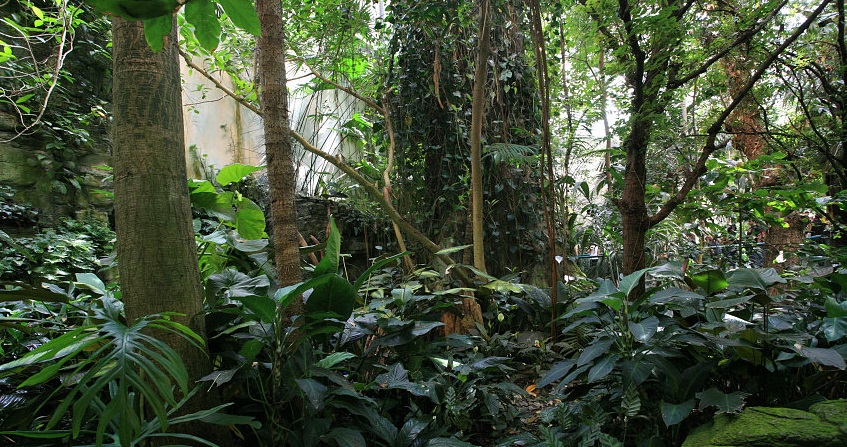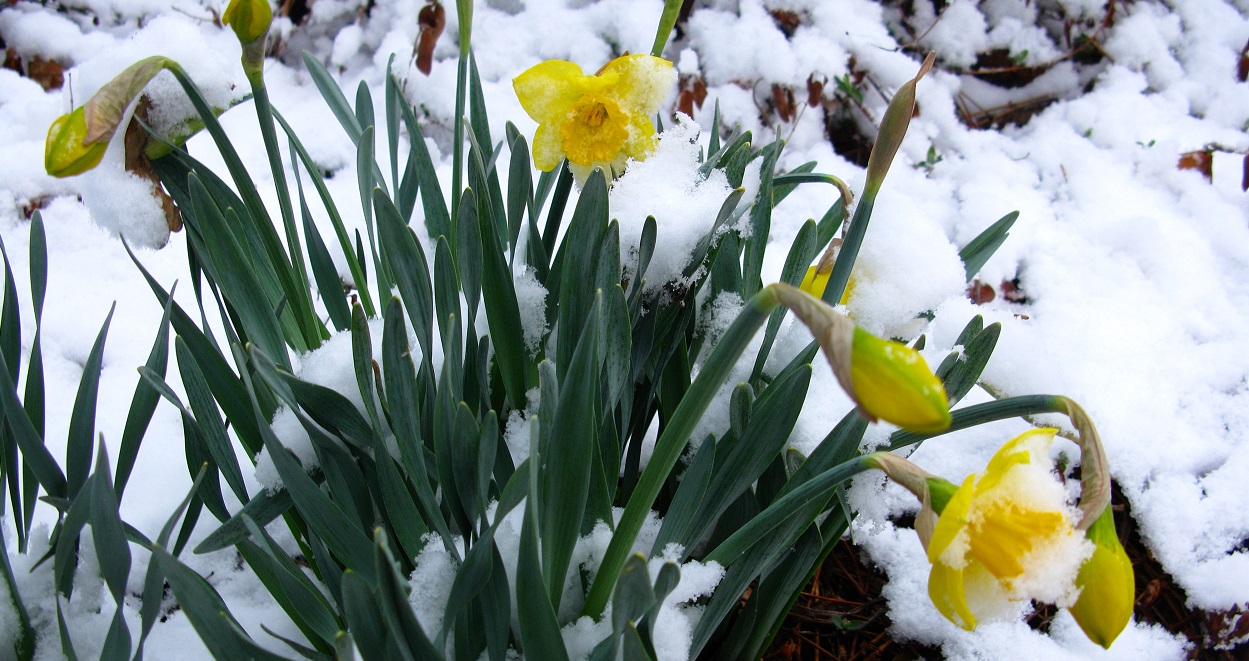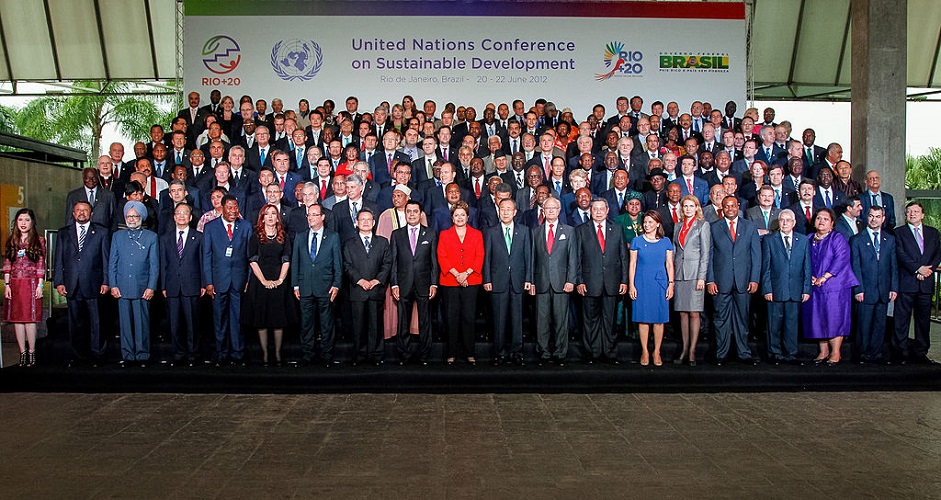The Great Green Wall: a hope for greening the Sahel?
PDF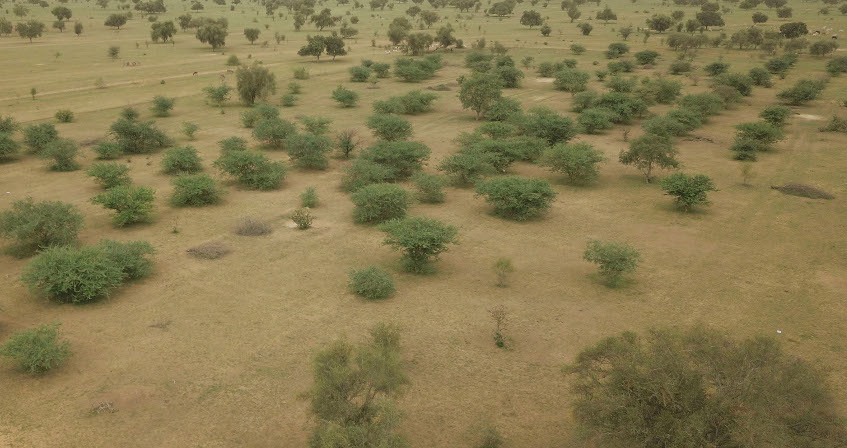
The Great Green Wall of Africa (GGW) is a pan-African initiative to combat desertification in the Sahara Desert and the Sahel. Originally conceived as a massive tree plantation crossing the African continent from west to east, the GGW has evolved into a set of restoration projects aimed at environmental and human well-being. Given the stated environmental and social objectives, researchers from all disciplines have an important role to play in pooling their expertise to guide the decisions of the institutions managing the project. While the GGW is no longer a simple wall of trees as originally envisaged by political actors, plants and re-vegetation remain at the heart of the project because, more than anywhere else, the people of the Sahel depend heavily on plant resources to meet their daily needs. The challenge is to find a balance between the protection and sustainable use of plant resources in a Sahel undergoing social and ecological transformation.
1. The Great Green Wall: an African response to global socio-environmental challenges
The Sahel is considered one of the most vulnerable areas on Earth. It is a set of ecosystems made up of steppes and shrubby savannah with trees crossing the African continent from west to east and marking the eco-geographical transition between the Sahara desert in the north and the Sudanese zone in the south. These ecosystems, which are largely dedicated to pastoralism, are highly vulnerable due to anthropogenic pressure and hydro-climatic instability in the area.
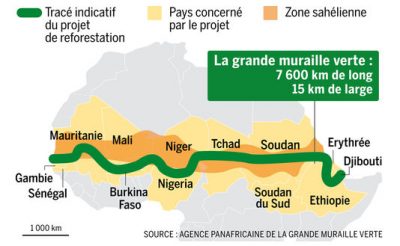
This persistence of a deficit of rainfall events, combined with an increase in heavy rainfall, typically corresponds to a more extreme climate characterized by both more severe dry periods and heavier rainfall when it rains.
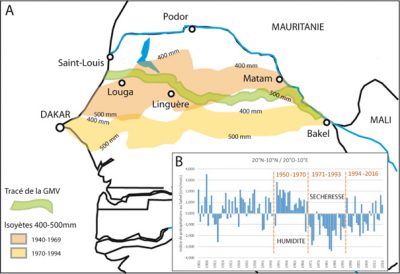
- causes of desertification poorly understood;
- massive reforestation actions considered as infeasible and having undesirable effects, etc…
Since its adoption, the GGW has evolved towards a more realistic vision and a more appropriate response to regional challenges. It now takes the form of a series of restoration actions carried out on a landscape scale and which are geographically linked in order to respond to the environmental and socio-economic well-being of Sahelian populations.
Since its inception, GGW has been highly diversified: fencing plots to allow natural regeneration of trees and protection against overgrazing, installation of community gardens managed by women, animal reserve projects, development of beekeeping… However, “reasoned reforestation” and plant resource management remain one of the essential levers for greening and preserving the environment in the Sahel. They are part of a context where large-scale reforestation is clearly a global issue. For example, “The Bonn Challenge” aims to restore 350,000 million hectares of deforested land by 2030. As an action of the GGW, reforestation also meets the sustainable development objectives set by UN Member States. Its objective n°15 consists in particular in “preserving and restoring terrestrial ecosystems, by ensuring their sustainable use, sustainably managing forests, combating desertification, halting and reversing the process of land degradation and halting the loss of biodiversity” [5].
To meet its ambitions, the GGW must integrate knowledge from a wide range of scientific disciplines into the decision-making process. For example, the apparent homogeneity of Sahelian landscapes can lead to simplistic and stereotypical interventions (reduced number of solutions). However, in reality, the Sahelian zone is rather a mosaic of landscapes composed of socio-ecosystems that are intertwined in space. To manage natural resources, we must therefore consider not only the biophysical components of ecosystems but also the human components, as well as the complex interactions that exist between the two. It is all these interactions that determine the identity of the socio-ecosystem. Knowing socio-ecosystems and their functioning requires interdisciplinary study, with researchers then becoming full-fledged actors in the construction of GGW through the transfer of their research results to managers [6]. Even if GGW’s actions have diversified over time, vegetation research is still at the heart of the solutions to be proposed, one of the criteria for quality reforestation being primarily the degree of biodiversity of the plantations.
2. Maximize biodiversity on the GGW route
Biodiversity loss is a major global concern [7]. Because of its spatial ambition, the GGW has a role to play in reversing the trend on the scale of the African continent. At the local level, Sahelian populations are highly dependent on woody biodiversity to provide them with ecosystem services to meet their daily needs for food, health, fuelwood, construction wood, etc.). However, in a large part of the Sahel, the biodiversity of woody species is in decline: to give an order of magnitude, in the Six Drilling Sylvo-Pastoral Reserve (northern Senegal) where a CNRS Human-Media Observatory has been set up to monitor the socio-environmental impacts of GGW, only 20 species belonging to 13 families have been recorded [8].
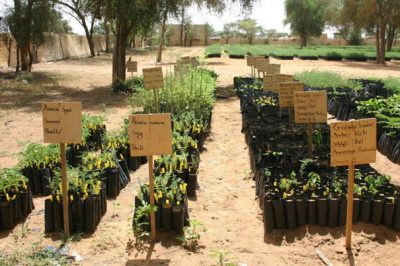
- reforestation does not increase biodiversity beyond what natural regeneration of ligneous trees (by allowing nature to rest by excluding animals and humans for a given time) can achieve;
- the conditions for the establishment of species are far from uniform despite the apparent similarity of eco-geographical conditions along the route.
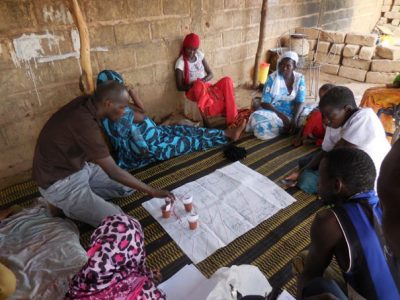
3. Better valorize the potential of the most adapted woody species
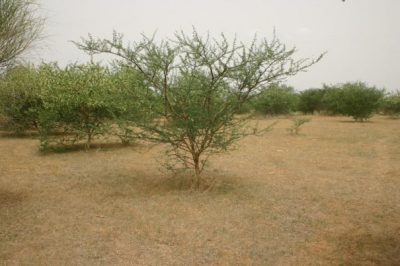
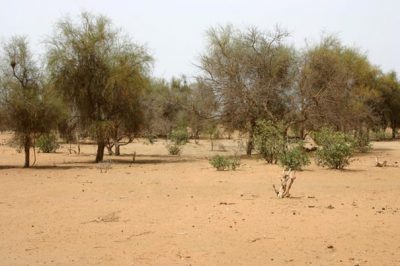
The characteristics of the root system are equally spectacular. It develops very quickly, even during the first dry season after transplanting the young plant into the ground, while at the same time its aerial parts develop much more slowly. Root morphology has a dual system that is very structurally efficient: lateral roots grow near the soil surface, catching even the slightest surface rain; while a taproot grows deep, allowing access to deep water reserves [11].
Balanites aegyptiaca is not only robust, but according to ethnobotanical studies, it is also the woody species considered most useful by local populations. They use it mainly for food, medicine, firewood and construction [12]. Its importance for mankind is not recent: its uses are mentioned since the time of the 12th dynasty of Egypt, about 4000 years ago [13]. Today, if all parts of the tree are appreciated, it is above all the fruit that brings socio-economic hope. The pulp is of great nutritional value compared to other tropical fruits: it is rich in K, Ca, Mg, Fe, and Zn [14]. The almond contains up to 50% good quality oil, rich in unsaturated fatty acids (linoleic and oleic acids). If the oil is edible, it is also found in some cosmetic products, but much more discreetly than argan and shea butter [15]. Today, the sale of Balanites aegyptiaca fruits is subject to informal local trade, but the species is far from reaching its economic potential.
While research has led to a better understanding of the environmental and genetic factors dictating the economic interest of the species (fruit size and nutritional value, oil content of the almond), significant efforts still need to be made to enable Balanites to contribute significantly to the incomes of Sahelian populations.
4. Science at the service of the Great Green Wall
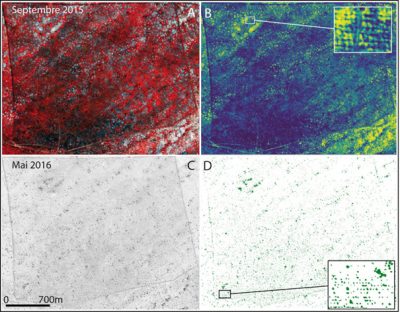
At the species level, we are able to identify the right balance between the practice of old and proven techniques (zai, half-moon [18]), and the contributions of modern science (new varieties better adapted to drought; pre-inoculation of plants with mycorrhizal fungi [19], beneficial soil microorganisms that improve mineral nutrition and water status of plants). At the landscape level, very high resolution satellite data now allow:
- quantitatively evaluate GGW reforestation using spatial analysis techniques (success rate as a function of soil water retention capacity, added value of GGW for carbon sequestration),
- use these results prospectively to identify and select new areas where future reforestation actions can be carried out with a good probability of success (Figure 7).
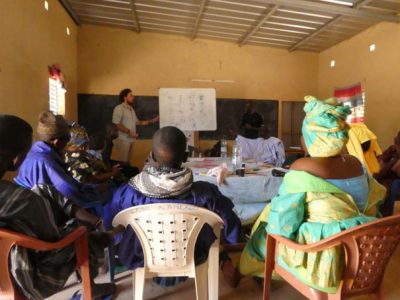
5. Messages to remember
- The Sahel area is subject to severe hydroclimatic and anthropogenic constraints that make it highly vulnerable (soil erosion, desertification, biodiversity loss, malnutrition).
- Subjected to unprecedented population growth and the negative consequences of ongoing climate change, its vulnerability is bound to increase in the future.
- At the same time, its capacity for resilience is strong, provided that appropriate actions are taken. State-of-the-art methodologies and modern research tools demonstrate this potential, particularly in terms of increasing biomass and biodiversity.
- The Great Green Wall and its various actions are an effective lever to improve the situation in the Sahel, provided, however, that all stakeholders, including researchers, managers and local beneficiary populations, are closely involved.
New development protocols are currently being scientifically tested using an interdisciplinary and collective approach involving researchers, affected populations and GGW practitioners. They aim to identify new sets of actions to increase people’s ability to adapt to ongoing changes and to generate new resources, while managing their environment in a balanced and sustainable way.
Notes and references
Cover image. Aerial view of the first reforestation plot of the Senegalese Great Green Wall, 9 years after the first transplants of Acacia senegal carried out in 2008 [Source: Photo © J-L Peiry, 2017].
[1] DIFFENBAUGH NS, GIORGI F (2012). Climate change hotspots in the CMIP5 global climate model together. Climatic Change. 114(3-4):813-822. doi:10.1007/s10584-012-012-0570-x.
[2] NIANG I, RUPPEL OC, ABDRABO MA, et al (2014). Africa, in: BARROS VR, FIELD BC, DOKKEN DJ et al (Eds.), Climate Change 2014: Impacts, Adaption, and Vulnerability. Part B: Regional Aspects. Contribution of Working Group II to the Fifth Assessment Reprot of the Intergovernmental Panel on Climate Change. Cambridge University Press, Cambridge, United Kingdom, pp. 1199-1265.
[3] PEIRY J-L and VOLDOIRE O. (2019) Climate framework and water resources in the Senegalese Great Green Wall area In: BOETSCH G, DUBOZ P., GUISSE A., SARR P. and. (Ed.). The Great Green Wall, an African response to climate change. CNRS Editions, Paris.
[4] LEBEL T, PANTHOU, G. & VISCHEL T. (2018) Au Sahel, pas de retour à la normale après la « grande sécheresse. See on The Conversation, URL: https://theconversation.com/au-sahel-pas-de-retour-a-la-normale-apres-la-grande-secheresse-106548 (in french)
[5] UN General Assembly, Transforming our world: the 2030 Agenda for Sustainable Development, 21 October 2015, A/RES/70/1, available at:
http://www.refworld.org/docid/57b6e3e44.html[accessed 21 August 2018]
[6] BOETSCH G, BOCCANFUSO P (2016) Science and the Great Green Wall (film)
[7] ROCKSTRÖM J, STEFFEN W, NOONE K et al (2009) A safe operation space for humanity. Nature 461: 472-475.
[8] NIANG K, SAGNA MB, NDIAYE et al (2014) Revisiting tree species availability and usage in the Ferlo region of Senegal: a rationale for indigenous tree planting strategies in the context of the Great Green Wall of the Sahara and Sahel Initiative. Journal of Experimental Biology and Agricultural Sciences 2:529-537.
[9] WADE TI, NDIAYE O, MAUCLAIRE M et al (2018) Biodiversity field trials to inform reforestation and natural resource management strategies along the African Great Green Wall in Senegal. New Forests 49: 341-362. http://dx.doi.org/10.1007/s11056-017-9623-3
[10] BOËTSCH G and SPÄNI A. (2013) The Great Green Wall: trees against the desert. Editions Privat, France
[11] BREMAN H, KESSLER JJ (1995) Woody plants in agro-ecosystems of semi-arid regions with an emphasis on Sahelian countries. Springer-Verlag, Berlin, Germany
[12] SAGNA MB, NIANG K, GUISSE A, GOFFNER D (2014) Balanites aegyptiaca (L.) Delile: geographical distribution and ethnobotanical knowledge by local populations in the Ferlo (north Senegal). Biotechnol. Agron. Soc. Approximately. 18: 503-511
[13] NATIONAL RESEARCH COUNCIL (2008) Lost Crops of Africa: Volume III: Fruits. The National Academies Press, Washington DC.
[14] SAGNA MB, NDIAYE O, DIALLO A, GOFFNER D, GUISSE A (2014) Biochemical composition and nutritional value of Balanites aegyptiaca fruit pulp from the Ferlo region in northern Senegal. Afr J Biotechnol 13: 336-342.
[15] https://www.klorane.com/ch-fr/cheveux/dattier-du-desert
[16] DARDEL C. KERGOAT L, HIERNAUX P et al (2014) Re-greening Sahel: 30 years of remote sensing data and field observations (Mali, Niger) 140: 350-364. https://doi.org/10.1016/j.rse.2013.09.011
[17] http://future-sahel.blogspot.com/
[18] https://www.ilesdepaix.org/wp-content/uploads/2014/09/Le-zaï-et-la-demi-lune.pdf
[19] http://books.openedition.org/irdeditions/3304
[20] https://rethink.earth/wayfinder/
The Encyclopedia of the Environment by the Association des Encyclopédies de l'Environnement et de l'Énergie (www.a3e.fr), contractually linked to the University of Grenoble Alpes and Grenoble INP, and sponsored by the French Academy of Sciences.
To cite this article: GOFFNER Deborah, PEIRY Jean-Luc (January 5, 2025), The Great Green Wall: a hope for greening the Sahel?, Encyclopedia of the Environment, Accessed January 21, 2025 [online ISSN 2555-0950] url : https://www.encyclopedie-environnement.org/en/life/green-wall-hope-greening-sahel-2/.
The articles in the Encyclopedia of the Environment are made available under the terms of the Creative Commons BY-NC-SA license, which authorizes reproduction subject to: citing the source, not making commercial use of them, sharing identical initial conditions, reproducing at each reuse or distribution the mention of this Creative Commons BY-NC-SA license.





